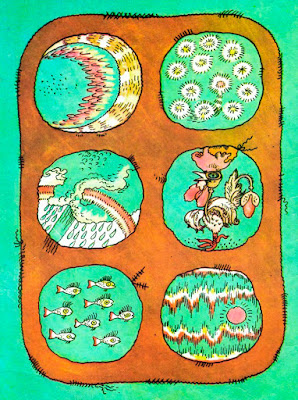I believe this is a first for a ballet, as I can't find reference to the Japanese fairy tale being re-created in this particular dance medium, but it's not just a performance either. This special fairy tale presentation by the Asia Society Texas, in collaboration with the Houston Ballet will take place alongside a textile exhibit and interactive presentation, as well as storytelling.
Tsuru, translated as
The Crane Wife, is one of Japan's best known fairy tales and tells the story of a crane that CHOOSES to become a woman and be the wife of the man who releases her from a hunter's trap (or, alternately, removes an arrow and binds her wound, then sets her free). The tale (which you can read
HERE) is rather tragic as, inevitably, a crane cannot remain married to a human, and as such, is perfect fodder for a classical ballet story.
The tale has been unforgettable for me ever since I first read it as a child; the transformations, the images of white, black and red, a wife's secret and the complications love and relationships bring, all so elegantly woven together. I love this fairy tale.
 |
| Official artwork for "Tsuru" with Asia Society Texas & Houston Ballet |
I've put together some excerpts from articles listed as sources below, to piece together the overview for you and to highlight the emphasis on the tale, why it's so fascinating and why the multi-media format of this event reflects it as well:
 |
Traditional drawing from The Crane Wife
artist unknown |
It's easy to see why "The Crane Wife" would appeal to Kusuzaki (Houston Ballet soloist), who grew up in the classical ballet world. The tale is, in some ways, a reverse version of "Swan Lake." It's about a wounded bird who becomes a woman.
A farmer finds the crane in his fields with an arrow through its body. He rescues it and sets it free, then returns home to find a lovely young woman waiting for him. They marry. To help him prosper, she hides behind a screen for days at a time, weaving gorgeous textiles for him to sell. He must promise not to peek. Of course he can't resist. When he discovers she has been reverting to bird form, plucking her feathers to create the fabric until she's ill, she flies away.
 |
| Mariana Godet - Ballet and Origami |
 |
| Tsuru no ongaeshi ii by lirael42 |
Kusuzaki has wanted to share the unique culture of Japan through dance ever since moving to Houston 11 years ago. "For me, the longer I live away from my home country of Japan, the more reverence I have—reverence toward tradition and innovation, transcendence and solidarity, and of understated, but, fierce, strength and integrity." All of them will be on display this weekend at Asia Society Texas. "[The ballet's] heroine lives a life of duality: a crane behind the screens and a woman in the public’s eyes," says soloist Kusuzaki, who will dance on pointe as the crane and on flat as the woman. "Many ballet heroines journey through these dualities and take on different forms, such as Maiden to Odette in Swan Lake, Giselle to Wilis in Giselle, and Temple Dancer to Shade in La Bayadere." There's a difference, though, as Kusuzaki points out: Tsuru has complete autonomy over her destiny. She is in complete control of her transformation and decides when she is crane and when she is woman.
Kusuzaki said she initially focused on the themes of temptation and broken promises, but her collaborators saw the tale as a framework for reinterpretation. She said "Tsuru" offers a modern, layered take on the story. It's about a relationship between a man and a woman, not a fairy tale.
...Not quite the traditional production Kusuzaki originally imagined, it's become something more, with a team of Japanese natives who, like her, built careers outside their country. "We have a different perspective from people who live in Japan," she said.
The production blends contemporary choreography with theatrical movement and live music. Its set includes five panels and projected video.
I really wish I could go to this! I will have to watch for any reports and photos of the special event.
It's exactly the sort of collaborative storytelling experience that makes a big impression, even more-so today, in the era where so much information-overload is at our fingertips. To experience this 'live tale' can be life changing.
Here's the press copy for the overall event:
Storytelling traditions and the uses of textiles are varied throughout Asia. Our focus for the first Creation Station of 2015 will be The Crane Wife, known as Tsuru no Ongaeshi in Japanese, which recounts how the life of a broken-hearted man is transformed when he rescues an injured crane. We will create wing designs from yarn, bookmarks from cardboard looms, and felt pouches. We will also exhibit selected Asian textiles for visitors to learn about the myriad of styles across the continent.
Interested in this program? Asia Society invites you to join us for a beautiful retelling of The Crane Wife folktale through music and movement in collaboration with Houston Ballet.
Saturday, June 27 at 7:30. Sunday, June 28 at 2. $25–35. Asia Society Texas, 1370 Southmore Blvd. 713-496-9901. asiasociety.org
I wanted to add this quote as well because I think it sums it up very nicely:
(Artistic Director) Matthew Ozawa says the work has universal appeal. "We as humans relate easily to stories of myth, especially those deeply impacted by transformations and metamorphosis," he says. "They help uncover and reveal deep universal truths of who we are."
 |
| Tsunekazu The Grateful Crane - Gion Odori 2008 |
Sources:
HERE,
HERE &
HERE



























































